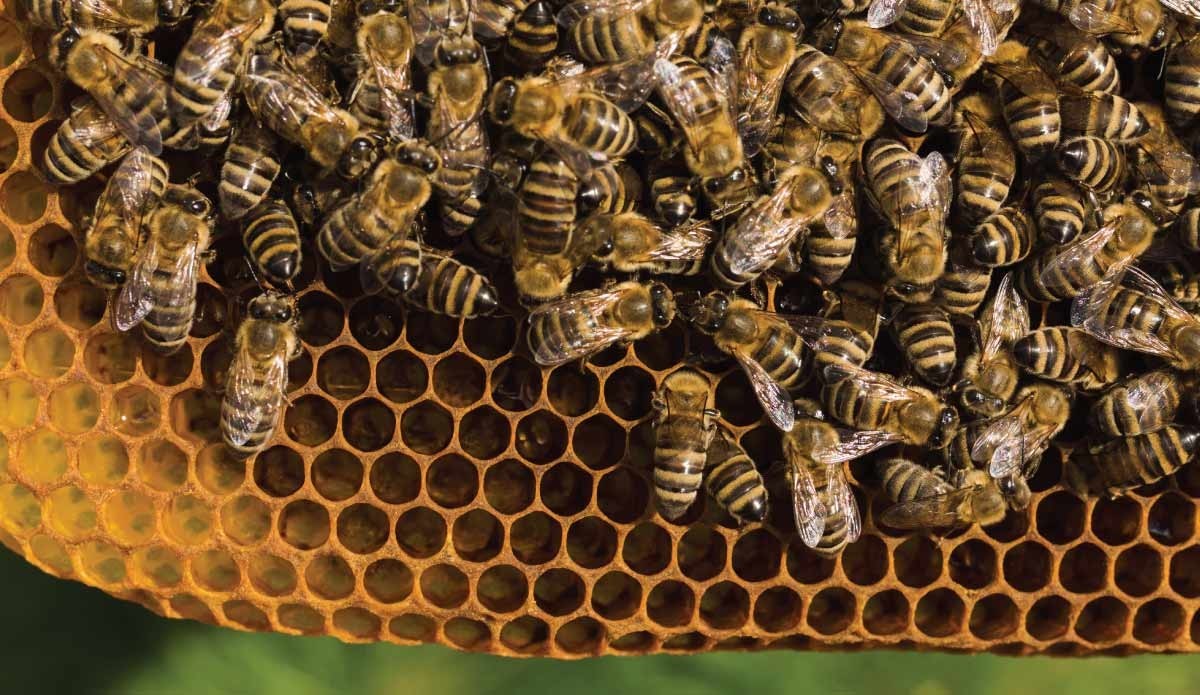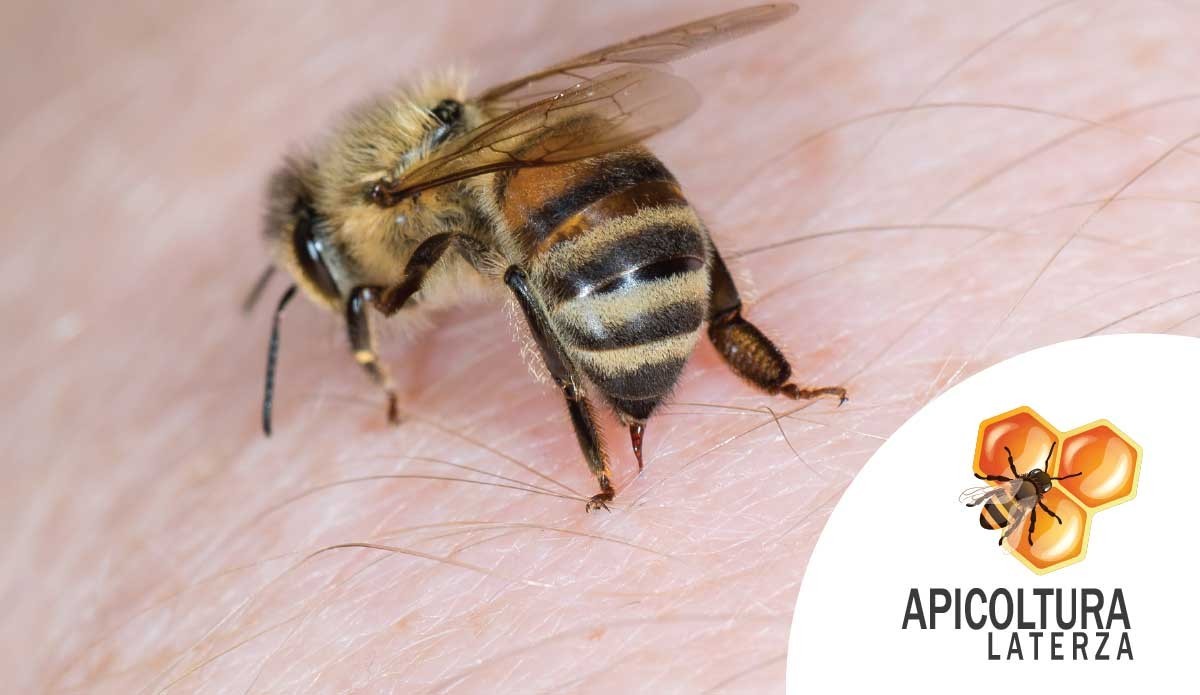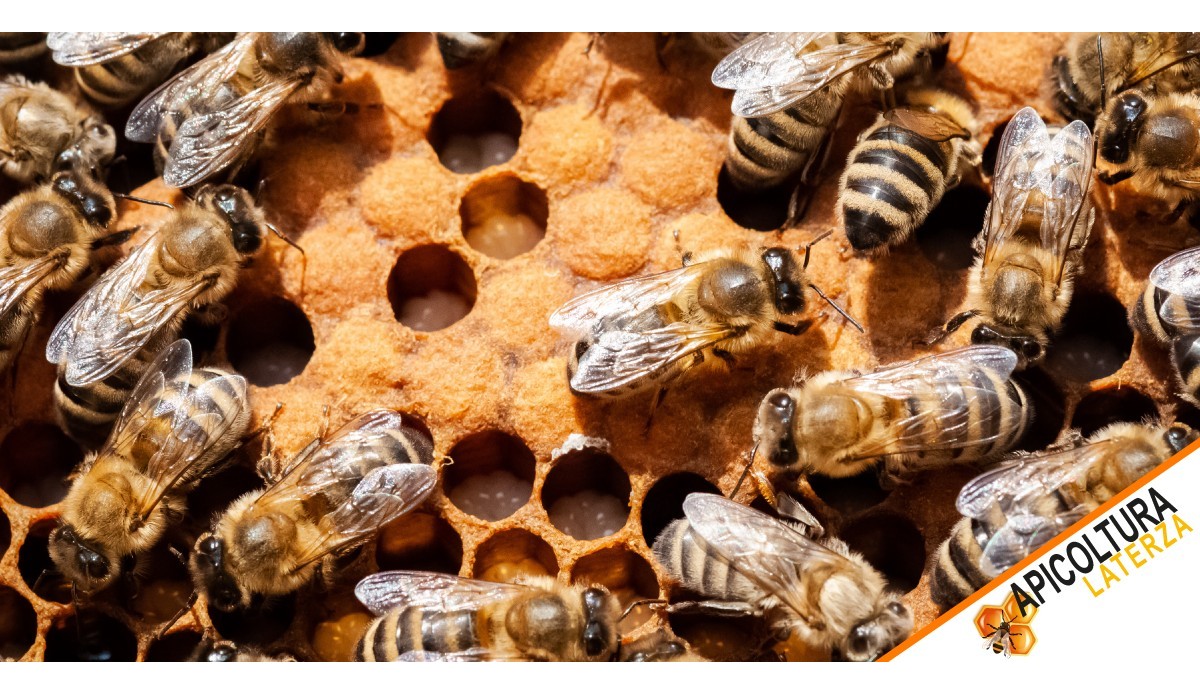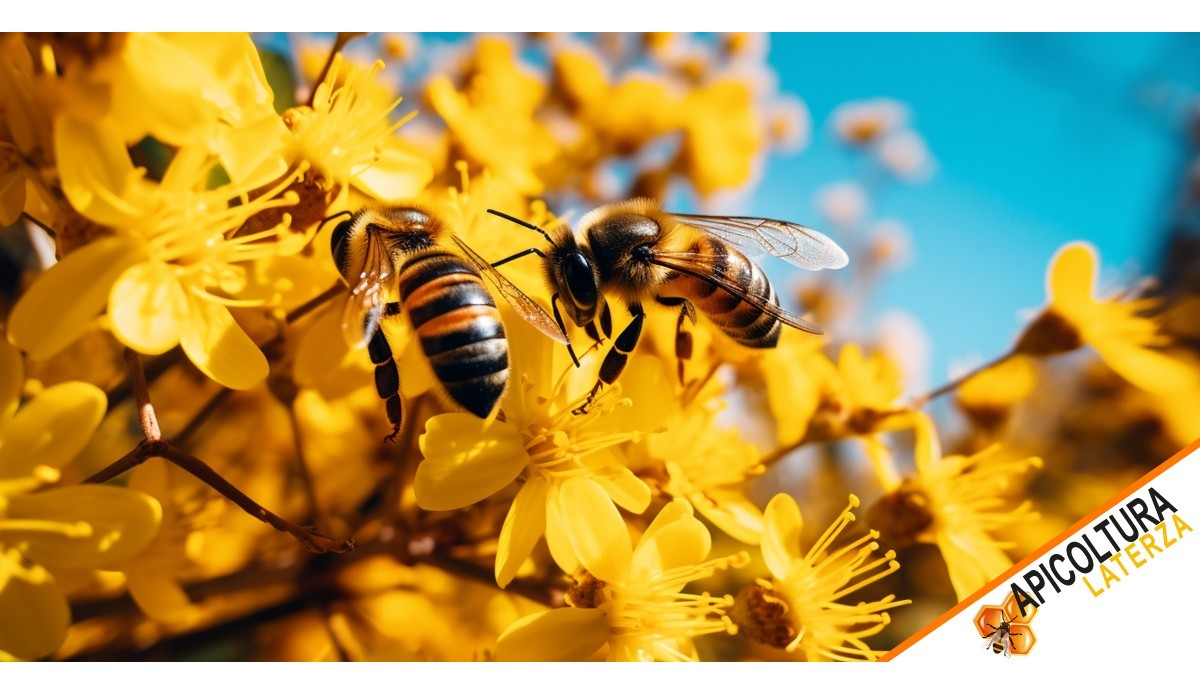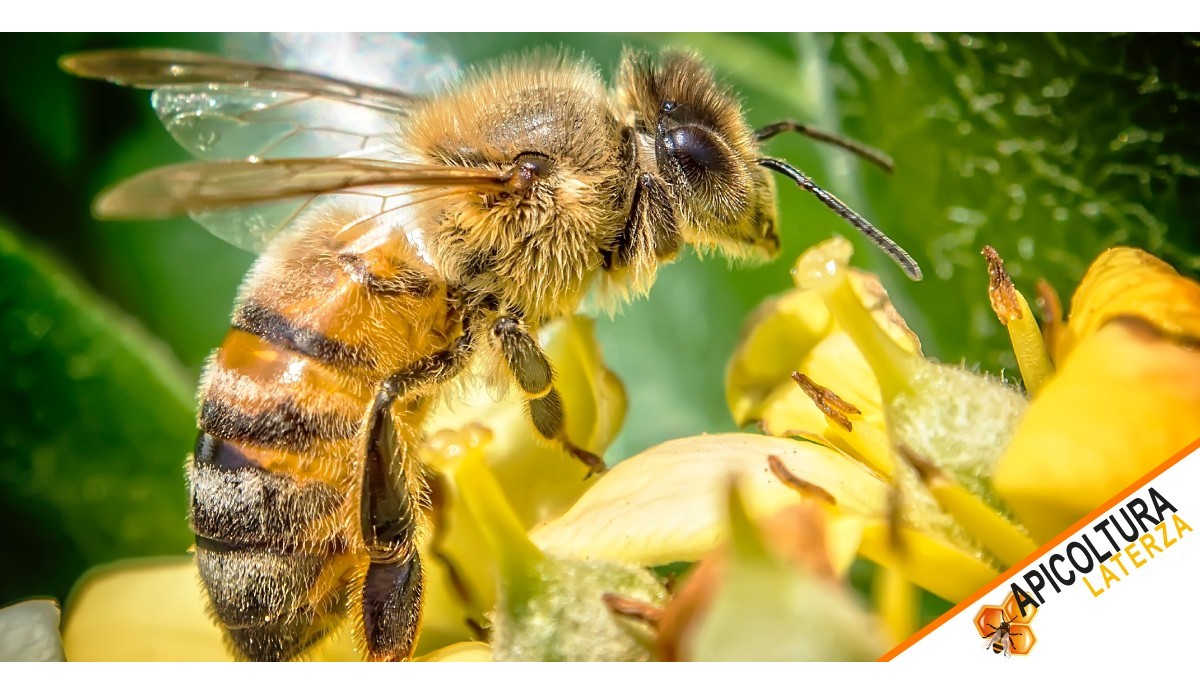Queen Bee Cycle: How She Is Born, Lives, and Leads the Hive
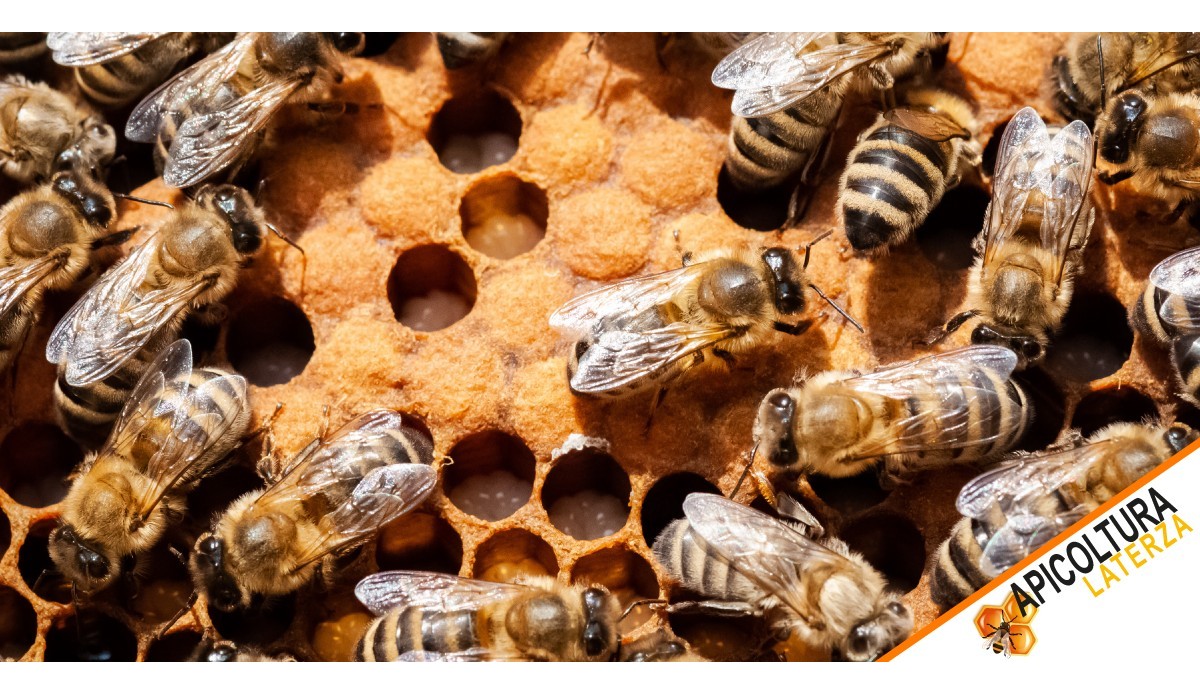
At the beating heart of every hive is a single central, powerful, and irreplaceable figure: the queen bee. Understanding the queen bee cycle means diving into the extraordinary social organization of bees and discovering how, from a simple larva, the individual destined to ensure the colony’s survival and continuity develops.
In this article, Apicoltura Laterza guides you through how the queen bee is born, what she does, the phases of her development, and how egg-laying occurs, following each stage of her life from her birth to her role as the mother of thousands of bees.
At the beating heart of every hive is a single central, powerful, and irreplaceable figure: the queen bee. Understanding the queen bee cycle means diving into the extraordinary social organization of bees and discovering how, from a simple larva, the individual destined to ensure the colony’s survival and continuity develops.
In this article, Apicoltura Laterza guides you through how the queen bee is born, what she does, the phases of her development, and how egg-laying occurs, following each stage of her life from her birth to her role as the mother of thousands of bees.
How the Queen Bee is Born
The queen bee's birth is a surprising process that occurs inside the hive when the colony needs to replace the old queen, who has reached the end of her reproductive cycle, or when it prepares to swarm, raising a new queen for the mother colony.
All bees are born from eggs laid in the hive’s cells, but the newly born queen bee is not the result of a different egg: what distinguishes her is solely the diet she receives. The fertilized egg from which she comes could also develop into a worker, but if the larva is fed exclusively royal jelly by the nurse bees, it will turn into a queen.
The queen bee's birth takes about 16 days from the egg: 3 days as an egg, 5 as a larva, and 8 as a pupa. The royal cell has an elongated, vertical shape and is easily distinguishable inside the hive. Once the metamorphosis is complete, the queen emerges: a newly born bee, but very different from her sisters.
Newly Born Queen Bee: What Happens?
Immediately after birth, the newly born queen bee begins a specific behavior essential to the colony’s structure. If there are other royal cells with unborn queens, she destroys them to assert her supremacy. Otherwise, she may fight with other already-born queens until only one survives: a potentially violent but necessary moment for the hive’s survival.
Once established, the queen is ready to leave the hive and carry out her nuptial flight.
Nuptial Flight: The Queen’s Mating
How many days after birth does the queen mate? The answer is: about 5–7 days. At that point, the queen mates during the nuptial flight with several drones, far from the hive to avoid inbreeding.
During this one-time flight in her life, the queen collects all the sperm needed for her reproductive activity. The drones’ reproductive organs remain in the queen at the end of mating, causing the drone’s death. The queen mates only once, but this guarantees her the ability to lay eggs for several years.
What the Queen Bee Does in the Hive
Back inside the hive, the queen begins her true role: she starts laying hundreds, up to two thousand, eggs per day. The queen lays one egg per cell: if it is a worker cell, she lays a fertilized egg; if it is a drone cell, she lays an unfertilized egg—a process called parthenogenesis.
This distinction is crucial to maintaining the colony’s balance. The queen is constantly fed by the worker bees and never leaves the hive unless a new swarm is being prepared. Her role is strictly reproductive: she does not collect nectar or pollen and does not take part in colony work. However, her role is vital.
The Life Cycle of the Queen Bee
The queen’s life cycle differs from that of other bees. A queen can live between 3 and 5 years, though her egg-laying capacity decreases over time. When the old queen is no longer efficient, the workers initiate the birth of a new queen, raising and replacing her without hesitation.
The entire cycle—from birth to decline—is perfectly and collectively orchestrated by the worker bees, who sense the queen’s health and fertility through pheromones.
How Many Eyes Does a Bee Have?
A fascinating and often overlooked detail concerns the bee’s physical structure. How many eyes does a bee have? The answer surprises many: five. Two compound eyes on the sides and three simple ocelli on the top of the head, used to perceive light. Like the workers, the queen also has five eyes, though her vision is less developed since she only flies for mating.
The Importance of Queen Bee Breeding and Sales
The queen bee can also be the subject of specialized breeding. At Apicoltura Laterza, we dedicate ourselves to the sale of queen bees, selecting the best genetic lines to ensure healthy, productive bees resistant to diseases. Breeding queens also means controlling egg-laying quality, colony aggressiveness, and swarming tendency.
Selecting a queen is a technical and delicate process that requires deep knowledge and constant attention. A good queen ensures the stability of the hive and the productivity of the entire apiary.
Conclusion
The queen bee cycle is an extraordinary example of efficiency and natural organization. From her birth to her reproductive role, every phase is governed by precise mechanisms. The newly born queen, through her nuptial flight, egg-laying, and central role in the colony, represents the biological and social heart of the hive.
Understanding how the queen is born, when she mates, and what she does is essential for every beekeeper—and for anyone who loves nature and the incredible complexity of the bee world.
At Apicoltura Laterza, we are committed every day to sharing this knowledge and offering high-quality services and products, promoting respectful and sustainable beekeeping.
If you’d like to learn more about our work or are interested in queen bee sales, contact us—we’re here to provide any information and professional support.

